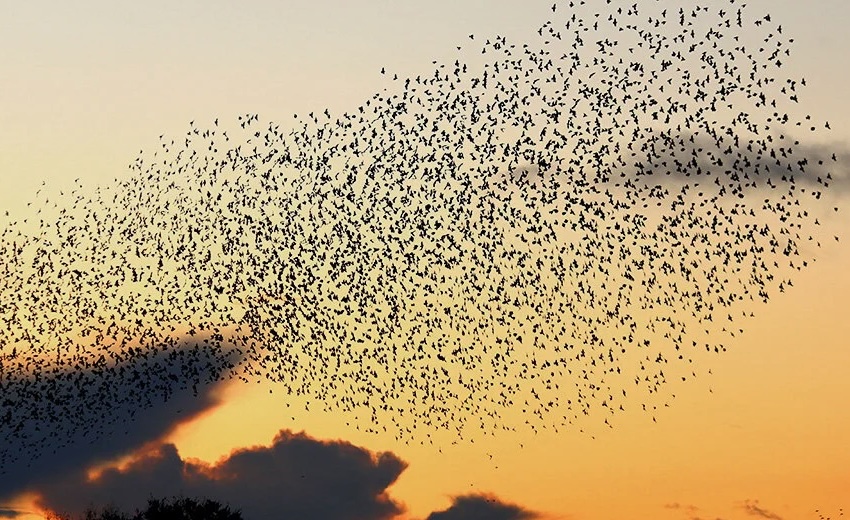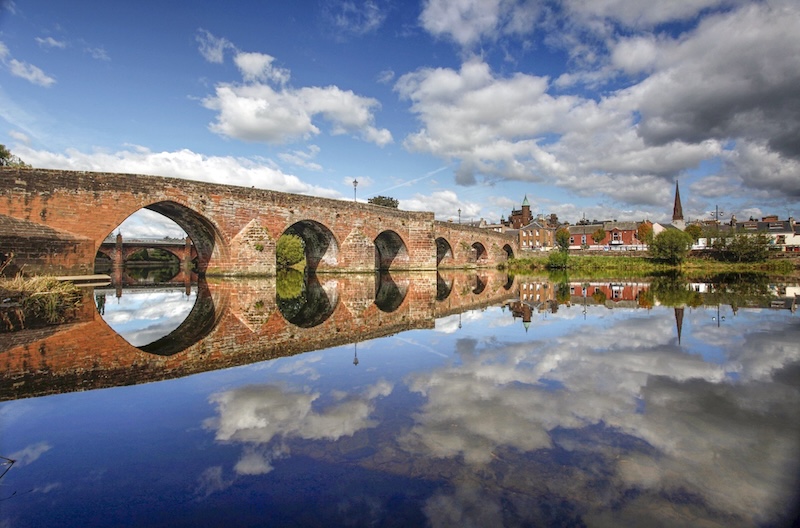While I was driving last week, I had to pull over. I saw my first murmuration of autumn.
Murmurations are the patterns that birds create when they gather en-mass and build fluid, rapidly shifting shapes. They are spectacular coordinated flight patterns of birds moving as one large, shape-shifting cloud. Murmurations consist of hundreds—sometimes thousands—of birds flying together in three-dimensional, ever-morphing patterns.
I wrote a column about these murmurations last year, but I am so captivated by them that I had to do more research. Scientists and birders are equally fascinated by murmurations. They have documented murmurations lasting as long as 45 minutes.
European starlings and African Queleas are known for murmurations. Other birds fly in flocks and formations, but do not murmurate. Flocks are groups of birds that congregate and fly in patterns, such as the “V” formation of geese, but they do not create the fluid patterns of a murmuration. On the Eastern Shore of Maryland, you can see European starlings, red-winged blackbirds, and common grackles performing some form of murmuration. They tend to gather over open fields of harvested grain and are especially prevalent at dusk.
European starlings are well suited for this spectacle because their lateral eyesight enables them to have almost a 360-degree field of vision. In spring and summer, starlings pair off and raise their young. But when breeding season is over they gather in autumn and begin their murmurations. Incidentally, the European starling is not native to the Americas, but approximately 100 were brought from Europe in the 1890s and released in New York’s Central Park. Now there are over 200 million in North America.
While I watched the murmuration, it appeared as if the birds were gathering into a dense mass and then scattering. They seemed to speed up and then spread wider apart. But these are optical illusions. The birds are, in fact, flying at a steady speed, playing “follow the leader” by copying the behavior of the nearest bird in their group of seven.
The rules to achieve a murmuration are surprisingly simple. The first is the rule of SEVEN. Murmurating birds follow their seven closest neighbors.
Here are the rules birds use to create a murmuration.
- Follow and turn with the seven nearest birds. They play “follow the leader.”
- Fly toward their group, without crowding.
Why do birds murmurate? Scientists don’t know. Some believe that they do it to confuse predators, a recently disproven hypothesis was that they did it to generate heat, because it is typically done in the fall and winter. Some ornithologists speculate that they might do it just for the joy of moving together. I have seen animals, such as squirrels, play. There is no reason not to believe that birds create their performance art for the fun of it.
So, we aren’t sure why they do it, but their synchronicity is magnificent, their dotted patterns unpredictable. It looks like fun. So, maybe they are doing it just for the sheer joy of creating performance art.
I don’t know how we could find out, but it doesn’t matter to me…I just love their art.
Angela Rieck, a Caroline County native, received her PhD in Mathematical Psychology from the University of Maryland and worked as a scientist at Bell Labs, and other high-tech companies in New Jersey before retiring as a corporate executive. Angela and her dogs divide their time between St Michaels and Key West Florida. Her daughter lives and works in New York City.


